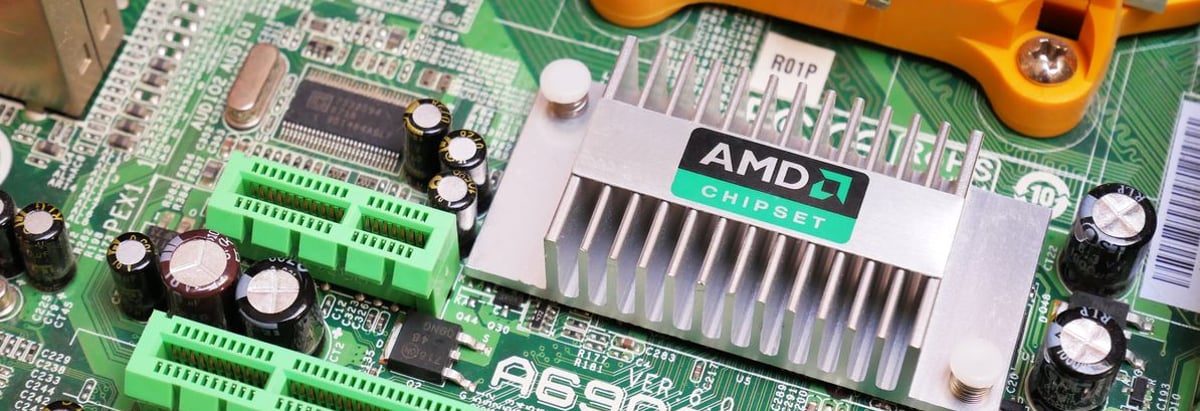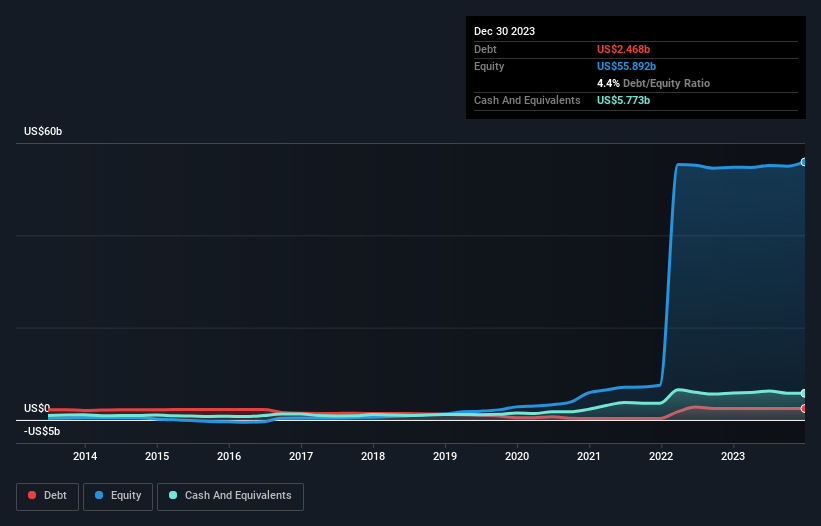- United States
- /
- Semiconductors
- /
- NasdaqGS:AMD
Is Advanced Micro Devices (NASDAQ:AMD) Using Too Much Debt?

The external fund manager backed by Berkshire Hathaway's Charlie Munger, Li Lu, makes no bones about it when he says 'The biggest investment risk is not the volatility of prices, but whether you will suffer a permanent loss of capital.' So it might be obvious that you need to consider debt, when you think about how risky any given stock is, because too much debt can sink a company. Importantly, Advanced Micro Devices, Inc. (NASDAQ:AMD) does carry debt. But is this debt a concern to shareholders?
What Risk Does Debt Bring?
Generally speaking, debt only becomes a real problem when a company can't easily pay it off, either by raising capital or with its own cash flow. Part and parcel of capitalism is the process of 'creative destruction' where failed businesses are mercilessly liquidated by their bankers. While that is not too common, we often do see indebted companies permanently diluting shareholders because lenders force them to raise capital at a distressed price. Of course, plenty of companies use debt to fund growth, without any negative consequences. When we think about a company's use of debt, we first look at cash and debt together.
View our latest analysis for Advanced Micro Devices
What Is Advanced Micro Devices's Net Debt?
As you can see below, Advanced Micro Devices had US$2.47b of debt, at December 2023, which is about the same as the year before. You can click the chart for greater detail. But it also has US$5.77b in cash to offset that, meaning it has US$3.31b net cash.

How Strong Is Advanced Micro Devices' Balance Sheet?
The latest balance sheet data shows that Advanced Micro Devices had liabilities of US$6.69b due within a year, and liabilities of US$5.30b falling due after that. Offsetting these obligations, it had cash of US$5.77b as well as receivables valued at US$5.39b due within 12 months. So its liabilities total US$835.0m more than the combination of its cash and short-term receivables.
Having regard to Advanced Micro Devices' size, it seems that its liquid assets are well balanced with its total liabilities. So while it's hard to imagine that the US$254.4b company is struggling for cash, we still think it's worth monitoring its balance sheet. Despite its noteworthy liabilities, Advanced Micro Devices boasts net cash, so it's fair to say it does not have a heavy debt load!
The modesty of its debt load may become crucial for Advanced Micro Devices if management cannot prevent a repeat of the 69% cut to EBIT over the last year. When it comes to paying off debt, falling earnings are no more useful than sugary sodas are for your health. The balance sheet is clearly the area to focus on when you are analysing debt. But ultimately the future profitability of the business will decide if Advanced Micro Devices can strengthen its balance sheet over time. So if you're focused on the future you can check out this free report showing analyst profit forecasts.
But our final consideration is also important, because a company cannot pay debt with paper profits; it needs cold hard cash. While Advanced Micro Devices has net cash on its balance sheet, it's still worth taking a look at its ability to convert earnings before interest and tax (EBIT) to free cash flow, to help us understand how quickly it is building (or eroding) that cash balance. Happily for any shareholders, Advanced Micro Devices actually produced more free cash flow than EBIT over the last three years. That sort of strong cash conversion gets us as excited as the crowd when the beat drops at a Daft Punk concert.
Summing Up
While it is always sensible to look at a company's total liabilities, it is very reassuring that Advanced Micro Devices has US$3.31b in net cash. The cherry on top was that in converted 140% of that EBIT to free cash flow, bringing in US$1.1b. So we are not troubled with Advanced Micro Devices's debt use. The balance sheet is clearly the area to focus on when you are analysing debt. However, not all investment risk resides within the balance sheet - far from it. These risks can be hard to spot. Every company has them, and we've spotted 2 warning signs for Advanced Micro Devices you should know about.
At the end of the day, it's often better to focus on companies that are free from net debt. You can access our special list of such companies (all with a track record of profit growth). It's free.
New: Manage All Your Stock Portfolios in One Place
We've created the ultimate portfolio companion for stock investors, and it's free.
• Connect an unlimited number of Portfolios and see your total in one currency
• Be alerted to new Warning Signs or Risks via email or mobile
• Track the Fair Value of your stocks
Have feedback on this article? Concerned about the content? Get in touch with us directly. Alternatively, email editorial-team (at) simplywallst.com.
This article by Simply Wall St is general in nature. We provide commentary based on historical data and analyst forecasts only using an unbiased methodology and our articles are not intended to be financial advice. It does not constitute a recommendation to buy or sell any stock, and does not take account of your objectives, or your financial situation. We aim to bring you long-term focused analysis driven by fundamental data. Note that our analysis may not factor in the latest price-sensitive company announcements or qualitative material. Simply Wall St has no position in any stocks mentioned.
About NasdaqGS:AMD
Flawless balance sheet with reasonable growth potential.


